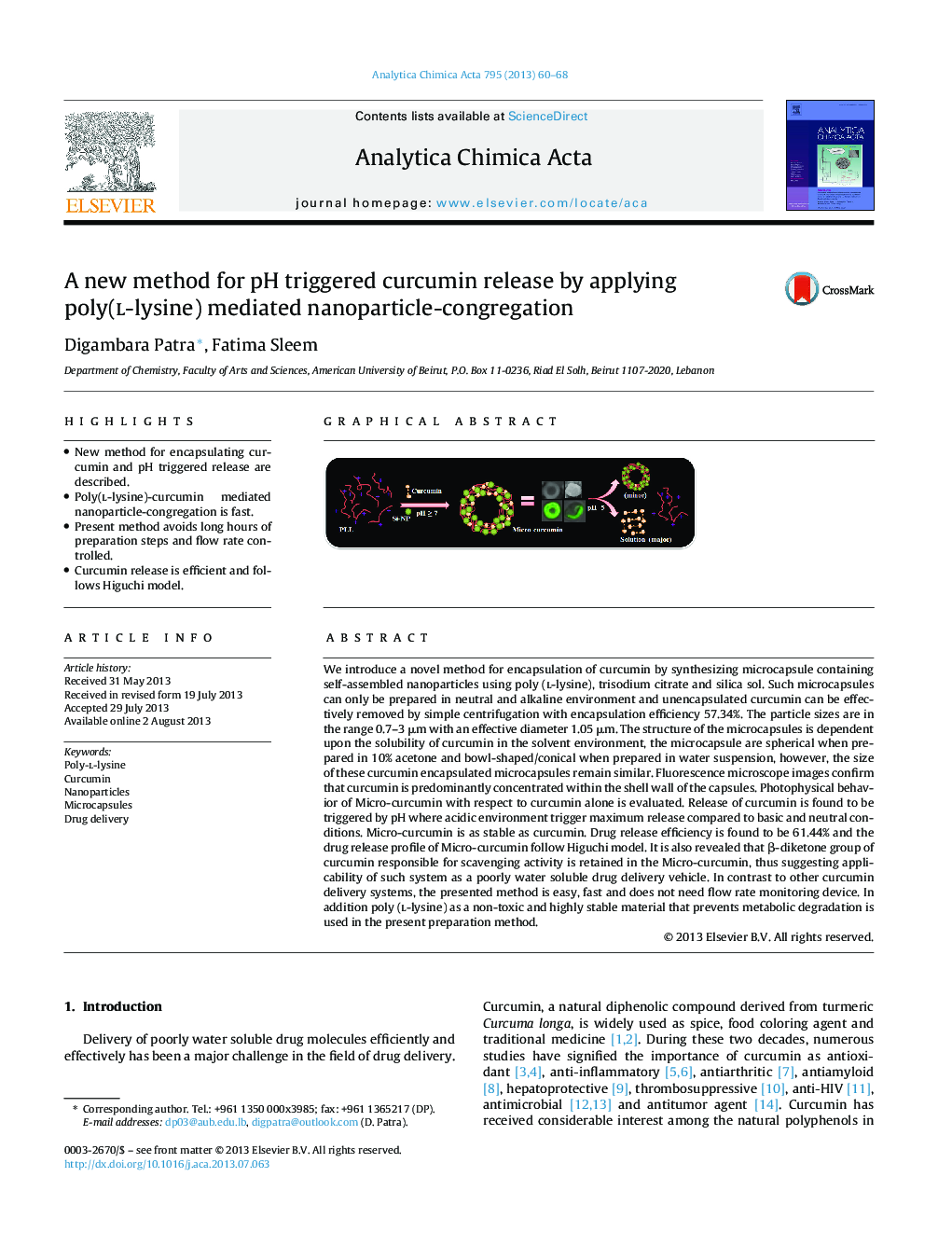| Article ID | Journal | Published Year | Pages | File Type |
|---|---|---|---|---|
| 1164595 | Analytica Chimica Acta | 2013 | 9 Pages |
•New method for encapsulating curcumin and pH triggered release are described.•Poly(l-lysine)-curcumin mediated nanoparticle-congregation is fast.•Present method avoids long hours of preparation steps and flow rate controlled.•Curcumin release is efficient and follows Higuchi model.
We introduce a novel method for encapsulation of curcumin by synthesizing microcapsule containing self-assembled nanoparticles using poly (l-lysine), trisodium citrate and silica sol. Such microcapsules can only be prepared in neutral and alkaline environment and unencapsulated curcumin can be effectively removed by simple centrifugation with encapsulation efficiency 57.34%. The particle sizes are in the range 0.7–3 μm with an effective diameter 1.05 μm. The structure of the microcapsules is dependent upon the solubility of curcumin in the solvent environment, the microcapsule are spherical when prepared in 10% acetone and bowl-shaped/conical when prepared in water suspension, however, the size of these curcumin encapsulated microcapsules remain similar. Fluorescence microscope images confirm that curcumin is predominantly concentrated within the shell wall of the capsules. Photophysical behavior of Micro-curcumin with respect to curcumin alone is evaluated. Release of curcumin is found to be triggered by pH where acidic environment trigger maximum release compared to basic and neutral conditions. Micro-curcumin is as stable as curcumin. Drug release efficiency is found to be 61.44% and the drug release profile of Micro-curcumin follow Higuchi model. It is also revealed that β-diketone group of curcumin responsible for scavenging activity is retained in the Micro-curcumin, thus suggesting applicability of such system as a poorly water soluble drug delivery vehicle. In contrast to other curcumin delivery systems, the presented method is easy, fast and does not need flow rate monitoring device. In addition poly (l-lysine) as a non-toxic and highly stable material that prevents metabolic degradation is used in the present preparation method.
Graphical abstractFigure optionsDownload full-size imageDownload as PowerPoint slide
